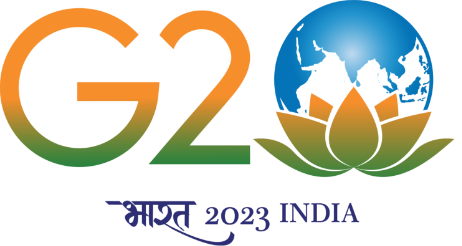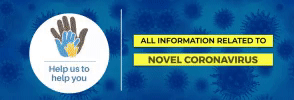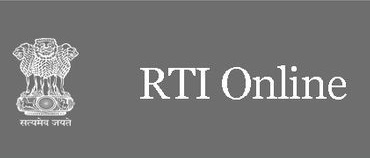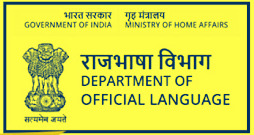Charter on Corporate Responsibility for Environmental Protection (CREP)
|
The Ministry of Environment & Forest (MoEF) has launched the Charter on "Corporate Responsibility for Environmental Protection (CREP)" in march 2003 with the purpose to go beyond the compliance of regulatory norms for prevention & control of pollution through various measures including waste minimization, in-plant process control & adoption of clean technologies. The Charter has set targets concerning conservation of water, energy, recovery of chemicals, reduction in pollution, elimination of toxic pollutants, process & management of residues that are required to be disposed off in an environmentally sound manner. The Charter enlists the action points for pollution control for various categories of highly polluting industries. The Task Force was constituted for monitoring the progress of implementation of CREP recommendations/ action points.
|
ACTION POINTS UNDER CREP FOR TANNERY SECTOR
| Chrome Recovery |
- All the chrome-tanning units in the country will have the Chrome Recovery Plant either on individual basis or on collective basis in the form of Common Chrome Recovery Plant and use the recovered chrome in the tanning process.
- Common Chrome Recovery Plant is to be installed and commissioned at Kanpur , for which the Feasibility Report has already been prepared.
- Recovered Chromium is to be utilized in tanning process
|
| Waste Minimization Measures |
- Waste minimization circles will be formed in all the clusters of tanneries in the country to implement waste minimization measures and for adoption of clean technologies.
- Efforts should be taken to implement the waste minimization measures in all the tanneries in the country and gradually made obligatory with time to the tannery units.
|
| Reduction of Water Consumption in Tannery Units |
- All the tanneries should install water meters and flow meters to measure actual consumption and waste water discharge.
- Water consumption rates will be brought down to 28 m 3 /tonne of hides by taking waste minimization measures.
|
| Compliance of standards |
|
All CETPs and ETPs should take the following measures:
- Employ qualified and well trained staff for O & M of the ETPs/CETPs.
- Installation of automatic monitoring instruments.
- Interlocking of manufacturing processes with ETP operation
- Separate Energy meters for ETPs/CETPs by December 2003.
- Open anaerobic lagoons should be converted into closed systems with gas recovery
- For health & safety of worker in the industry & ETP/ CETP the guidelines developed by CPCB should be implemented.
- All major tannery units should take-up environmental auditing on annual basis.
- Major tannery units & CETPs should attempt to obtain ISO-14000 certification
- Tannery units &CETP management should take-up modification/up-gradation of the CETPs/ETPs wherever necessary
|
| Management of Total Dissolved Solids (TDS) |
|
All tannery units to adopt the following
- Manual/mechanical desalting.
- Use of cleaner technology for less use of salt.
- Refrigerated transportation of hides
- High Rate Transpiration system for effluent treatment
- Treated wastewater will be mixed with the sewage & the treated effluent be used on land for irrigation.
|
| Solid Waste Management |
|
All the tannery units to adopt the following:
- i. Utilization of Process sludge for by-product recovery.
- ii. Resource Recovery from process sludge and ETP sludge in the form of Biogas.
- iii. Chromium recovery from tanned leather shavings.
- iv. Safe disposal of hazardous sludge and non-hazardous solid wastes.
|
| Salts from Solar Evaporation |
|
All the tannery units to adopt the following:
- Reuse of recovered salt.
- Quality improvement of recovered salts for reuse
- Safe land disposal
- Sea disposal
|
|
Use of Boron bearing compounds will be dispensed with. By: December 2003
Ground water quality monitoring to be strengthened.
Sulphur recovery from sulphide bearing effluents to be explored.
The implementation of recommendations of the Task Force on leather tannery units constituted by the Ministry of Environment & Forests, Govt. of India in a phased manner.
|
 |
| Development of Minimal National Standards (MINAS) for Rubber products Manufacturing Industries |
|
The Central Pollution Control Board (CPCB) intends to develop Minimum National Standards (MINAS) for all types of industries with regards to their effluent discharge (water pollutants), emissions (air pollutants), noise levels and solid waste. The proposed model for evolving industry specific standards envisages specifying limits of pollutants to protect the environment. The standards thus developed will be applicable to the concerned industries throughout the country. The present study, in this series is on rubber products industries. Consulting Engineering Services ( India ) Limited, New Delhi has been engaged to assist co-ordinating agency Central Pollution Control Board (CPCB) for carrying out this study.
The rubber product manufacturing industry in India is basically divided into two major sectors: tyre and non-tyre. The tyre sector produces all types of automotive and non-automotive tyres whereas the non-tyre sector produces high technology and sophisticated products and comprises the medium scale, small scale and tiny units. Barring industries engaged in raw rubber production, there are approx. 4800 rubber based product manufacturing units comprising 30 large scale, 300 medium scale and around 4470 small scale and tiny sector units, employing four lakh people, including around 22000 technically qualified support personnel, with a turnover of 200 billion rupees and contributing 40 billion rupees to the National Exchequer through taxes, duties and other levies. Northern India ( Delhi , Haryana & Punjab) accounts for major rubber consumption and has maximum number of rubber products manufacturing units, primarily in small & medium scale. Other major states are Kerala, Tamilnadu, Andhra Pradesh, Gujarat & Karnataka. Rubber products industry thus plays a core sector role in the Indian National economy.
The geographical distributions of rubber product industries in India are given below.
|
| State/ Union Territory |
Number of units |
State/ Union Territory |
Number of units |
| Kerala |
896 |
Karnataka |
199 |
| Maharashtra |
542 |
Andhra Pradesh |
160 |
| Punjab |
472 |
Rajasthan |
111 |
| Tamil Nadu |
483 |
Madhya Pradesh |
74 |
| Uttar Pradesh |
435 |
Goa |
26 |
| West Bengal |
403 |
Jharkhand ( Bihar ) |
25 |
| Gujarat |
374 |
Orissa |
10 |
| Haryana |
332 |
others |
34 |
| Delhi |
195 |
|
|
|
|
Proposed MINAS for all categories of Rubber product Industries
|
| Sl.No |
Parameter |
Tyre & Tube Industry |
Moulded, Extruded/ Calendared, Fabricated industry |
Latex based Industry |
Rubber reclaim Industry |
| 1 |
PH |
6.5 to 8.5 |
6.5 to 8.5 |
6.5 to 8.5 |
6.5 to 8.5 |
| 2 |
BOD 3 day @ 27c* |
NA |
NA |
100 |
NA |
| 3 |
Suspended Solids |
50 |
50 |
100 |
100 |
| 4 |
Oil & Grease** |
10 |
10 |
NA |
10 |
| 5 |
Lead*** |
NA |
0.1 |
NA |
NA |
| 6 |
Zinc**** |
NA |
NA |
5 |
NA |
| 7 |
Chromium***** |
NA |
NA |
0.05 |
NA |
|
|
Note:-Limiting concentrations of all above parameters are given in mg/l, except pH.
|
- * BOD 3 @27ºc may be made stringent up to 30 mg/l if the recipient fresh water body is a source of drinking water supply. BOD 3 value is relaxable up to 350 mg/l, if the wastewater is discharged into town sewer where secondary treatment of sewage is carried out.
- ** The limit of oil & grease shall be confirmed at the outlet of oil & grease trap unit. This implies that in the final treated effluent oil & grease concentration shall be lower than prescribed herein.
- ***Applicable to rubber hose product industry by the lead sheathed cure process
- ****Applicable to latex foam industry
- *****Applicable to plants using chromic acid for form cleaning technique.
- NA - Not Applicable
|
| Air emissions |
|
Field investigations, process details, sampling and monitoring and extensive literature survey establish two type of air pollutants generally associated with different processes of rubber product manufacturing industries as defined below:
- Rubber process dust (Particulate matter) arising as fugitive emission in the stages of rubber manufacture where ingredients are handled, weighed, added to or mixed with uncured natural or synthetic elastomers.
- Rubber fume evolved as fugitive emission in the mixing, milling and blending of natural and synthetic elastomers, or of natural rubber and synthetic polymers combined with chemicals, and in the processes which convert resultant blends into finished products or parts thereof, and including any inspection procedures where fume continues to be evolved. It is mixture of gases and vapors evolved from many individual chemical used in the process.
|
| MINAS for Air Emission
The strategy for implementing exposure and emission standards (MINAS) can be summarized as below:
- All rubber product industries, irrespective of its size, will comply with OSHA limits prescribed for rubber dust, rubber fume and individual chemicals.
- Tiny/small industries would achieve OSHA limits by adopting good working practices and proper ventilation design in working rooms as quantity of raw material for process is small.
- Medium/large industries would require local exhaust ventilation (LEV) System consisting of hood, duct, fan and stack at strategic locations to comply with the limits. Stack should be of suitable height and equipped with stack monitoring facilities.
- In case of SPM limit exceeds 150 mg/m 3 in flue gas in stack, control unit (filter/cyclone) has to be integrated with LEV System.
- Emission limit of VOC from Stack should be fixed as 50 mg/m 3 . Control measures such as Activated Carbon Adsorber/Incineration technology to be integrated with LEV system, if required. This is well within the techno-economic affordability of medium/large scale units.
- Emission of SPM and VOC should be periodically monitored and analyzed in light of new control techniques and the techno-economic feasibility for its application in India
- Flue gas emission from other sources such as Boiler and DG sets in the premises of rubber product industries should meet the Standards prescribed in the Emission Regulation of CPCB.
Noise Standards
Occupational noise standards has already been developed keeping health aspects in view and is also applicable in the case of rubber product industries. Noise exposure can easily be kept within occupational limits with available cost effective engineering and administrative measures without giving any financial burden to industries.
Solid waste Management
Rubber product industries have most of waste with salvage value and face no problem for its disposal. Cured and off-specification rubber wastes serve as raw materials for inferior quality products in industry. Solid waste like discarded materials other than rubber such as sludge from wastewater treatment plant is disposed as land filling.
|
| Comprehensive Industry Document on Electroplating Industry |
|
Electroplating is one of the varieties of several techniques of metal finishing. It is a technique of deposition of a fine layer of one metal on another through electrolytic process to impart various properties and attributes, such as corrosion protection, enhanced surface hardness, luster, colour, aesthetics, value addition etc. Electroplating operations are either performed as a part of manufacturing process by large scale manufacturing plants (e.g. automobile, cycle, engineering and numerous other industries) or performed as job-work for a wide variety of components by small and tiny units. These are spread across the entire country. However certain states have large number of units concentrated in some towns / cities, such as:
- Maharashtra - Mumbai, Pune, Nashik
- Karnataka- Bangalore
- Tamil Nadu - Chennai, Madurai
- Andhra Pradesh - Hyderabad
- Punjab - Ludhiana
- Delhi & NCR ( Faridabad in Haryana, NOIDA in U. P.)
- Gujarat- Ahmedabad, Rajkot
Electroplating is considered a major polluting industry because it discharges toxic materials and heavy metals through wastewater (effluents), air emissions and solid wastes into the recipient environment.
In order to regulate the quality of discharge of wastewater, the Central Pollution Control Board, in 1987, evolved Minimal National Standards (MINAS) for discharge of effluent under the provision of the Environment (Protection) Act of 1986. These standards now require comprehensive review in view of the current body of knowledge regarding discharge of pollutants, status of industry, technology and implementation of regulatory mechanism.
In view of above, CPCB prepared the Comprehensive Industry Document on Electroplating Industry. The objectives were to (i) study the environmental problems associated with this industry, (ii) assess all the three types of pollution, viz, air, water and noise (iii) to review the MINAS for effluent and specify standards for air and noise; (iv) to suggest cost-effective pollution control system and (v) to recover and reuse metals from waste. M/s. ENC Consulting Engineers, New Delhi was entrusted with this work as consultants.
Based on the present trends in electroplating and considering standards being used in other countries, it is evident that the existing list of parameters in wastewater discharge standards for electroplating industries be expanded to include the parameters listed below.
Suggested List of Additional Parameters
|
| Sl. No. |
Parameters |
Limit value (mg/l) |
| 1 |
Aluminium |
5.0 |
| 2 |
Tin |
2.0 |
| 3 |
Silver |
1.2 |
| 4 |
Fluorides (as F) |
15.0 |
| 5 |
Sulphides (as S) |
2.0 |
| 6 |
Sulphates (as S) * |
400.0 |
| 7 |
Trichloroethane |
0.5 |
| 8 |
Trichloroethylene |
0.5 |
| 9 |
Phosphates (as P) |
5.0 |
|
|
Existing Standards
|
| Sl. No |
Parameters |
Concentration not to exceed ( mg/l, except pH & temperature) |
To be implemented in** |
| 1 |
pH |
6.0 to 9.0 |
Existing |
| 2 |
Temperature |
Shall not exceed 5 0 c above the ambient temperature of the receiving body |
Existing |
| 3 |
Oil & Grease |
10 |
Existing |
| 4 |
Suspended Solids |
100 |
Existing |
| 5 |
Cyanides (as CN) |
0.2 |
Existing |
| 6 |
Ammonical Nitrogen (as N) |
50 |
Existing |
| 7 |
Total Residual Chlorine (as Cl) |
1.0 |
Existing |
| 8 |
Cadmium (as Cd) |
2.0 |
Existing |
| 9 |
Nickel (as Ni) |
3.0 |
Existing |
| 10 |
Zinc (as Zn) |
5.0 |
Existing |
| 11 |
Hexavalent Chromium (as Cr) |
0.1 |
Existing |
| 12 |
Total Chromium (as Cr) |
2.0 |
Existing |
| 13 |
Copper (as Cu) |
3.0 |
Existing |
| 14 |
Lead (as Pb) |
0.1 |
Existing |
| 15 |
Iron (as Fe) |
3.0 |
Existing |
| 16 |
Total Metal |
10.0 |
Existing |
|
|
Large and small industries should be required to provide effective collection system of gases and vapors from all hot baths and treat the gases and vapors with a water scrubber, the scrubbed gases should confirm to the following standards.
Proposed Standards for Air Emission from Electroplating Baths
|
| S. No. |
Parameter |
Emission Limit mg/Nm 3 |
| 1 |
Acid Mist (HCl & H2 SO4 ) |
50 |
| 2 |
Lead |
1 |
| 3 |
Nickel |
5 |
| 4 |
Chromium (VI) |
5 |
| 5 |
Chromium (Others) |
5 |
| 6 |
Cyanide |
5 |
|
|
Note :- Existing standards for SO2 and NO x shall continue to be applicable.
|


















